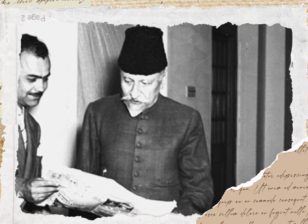Mumtaz Mahal: Set in Marble, Set in History
By: Ammara Sharib
Mumtaz Mahal is a name known across the world, mainly due to her association with one of India’s most well-known architectural wonders, the Taj Mahal. While many know that the Mughal queen is the inspiration behind the monument – and that the passionate love between her and her husband, Emperor Shah Jahan, has been the inspiration for love stories across media – most are unfamiliar with her life and legacy as a whole. Mumtaz Mahal is more than just a symbol of love. She was a woman of grace and intelligence whose influence went beyond her marriage. She was an important figure in the Mughal Empire, and life and history should be celebrated as such.
Photo: Britannica
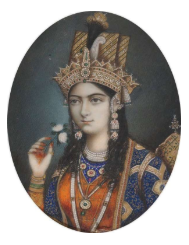
Photo: The Heritage Lab
1. A Lady of the Court
Arjumand Banu, who would later come to be known as Mumtaz Mahal, was born in 1593 into a family of high status. Her father, Abu’l-Hasan Asaf Khan, was a wealthy Persian noble, and her mother was of aristocratic lineage. Her family’s importance was further cemented when Mumtaz’s aunt, Nur Jahan, married Emperor Jahangir and became the chief consort of the Mughal court. As a noble lady, Mumtaz grew up with a higher education and was well-versed in Arabic and Persian. She was known for her skill in poetry and was well acquainted with the ways of the court and its complicated politics. She was intelligent, respected, and known for her grace and refinement.
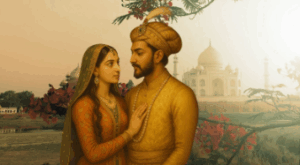
2. A Love Story for the Books
At the age of 14, Arjumand Banu was betrothed to Prince Khurram (later known as Shah Jahan). This was not like any other political marriage. Although Emperor Shah Jahan had other wives, he held a deep compassion for his bride-to-be. When they married five years later, Shah Jahan gave her a special name, “Mumtaz Mahal,” which meant “The Chosen One of the Palace”. These two were each other’s closest companions and loved each other deeply. Mumtaz would often accompany Shah Jahan on campaigns and give him advice on political matters. He trusted her to the point where he looked to her as an advisor. In their nineteen years of marriage, Mumtaz and Shah Jahan had fourteen children, only seven of whom survived to adulthood.
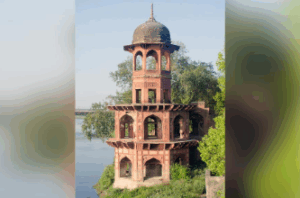
Photo: Telegraph India
3. Her Role As Mughal Empress
With so much focus on her love story with Emperor Shah Jahan, it can be easy to forget that Mumtaz Mahal was a very powerful woman. Shah Jahan trusted her so much that he reportedly gave her the official seal of the kingdom, but unlike her aunt Nur Jahan, Mumtaz did not use this influence to pursue further political power. Instead, she focused on promoting humanitarian programs, such as financially helping widows and orphans. These acts of generosity did not go unnoticed by the kingdom, and she was loved all around.
Mumtaz was also a patron of the arts, crafts, and poetry. As a talented poet herself, she supported many artists, scholars, and poets through financial means. One of these creatives was Vansidhara Mishra, one of the empress’s favorites and a popular Sanskrit poet during the period.
One of her most famous works was the Zahara Bagh garden in Agra. During its time, it was a beautiful garden and was renowned for its fame. As of today, a part of it has been cut to make a highway, and this architectural sight is in further danger of encroachment.
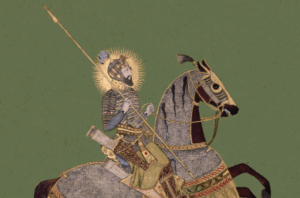
Photo: Open Magazine
4. A Clash For Power
Mumtaz Mahal’s life was cut short in 1631 at the age of 38 in the city of Burhanpur. She was accompanying her husband on a campaign and was heavily pregnant. After birthing her fourteenth and final child, she suffered from extreme hemorrhaging and died from the blood loss. Her death acted as a catalyst for a succession war. After Mumtaz’s death, Shah Jahan fell into deep grief, with some accounts noting that his beard turned from black to grey within weeks. With the throne weak, his sons engaged in a brutal succession war. The original heir, Dara Shikoh, lost, and Aurangzeb took the throne as the next emperor of the Mughal Empire. Her death had weakened her husband and left the throne open for the taking. Mumtaz had been Shah Jahan’s strength, and with her gone, so was his ability to keep control of his throne.
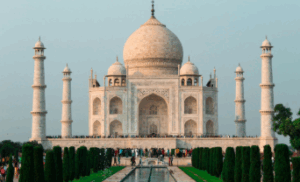
Photo: NDTV
5. A Legacy Set in Stone
Shah Jahan’s love for his wife knew no bounds, and he went into deep grief over her death, so much so that he began the construction of a mausoleum for his wife to honor her life and legacy. This monument would become known as the Taj Mahal, a magnificent feat of architecture constructed of white marble that is recognized by UNESCO as one of the Seven Wonders of the World. Today, the Taj Mahal remains one of the most visited and celebrated historical buildings in India. It not only serves as a tomb but also symbolizes the deep love the two had for each other. Mumtaz Mahal and Shah Jahan are both buried together in this building, and remain inseparable even in death.


